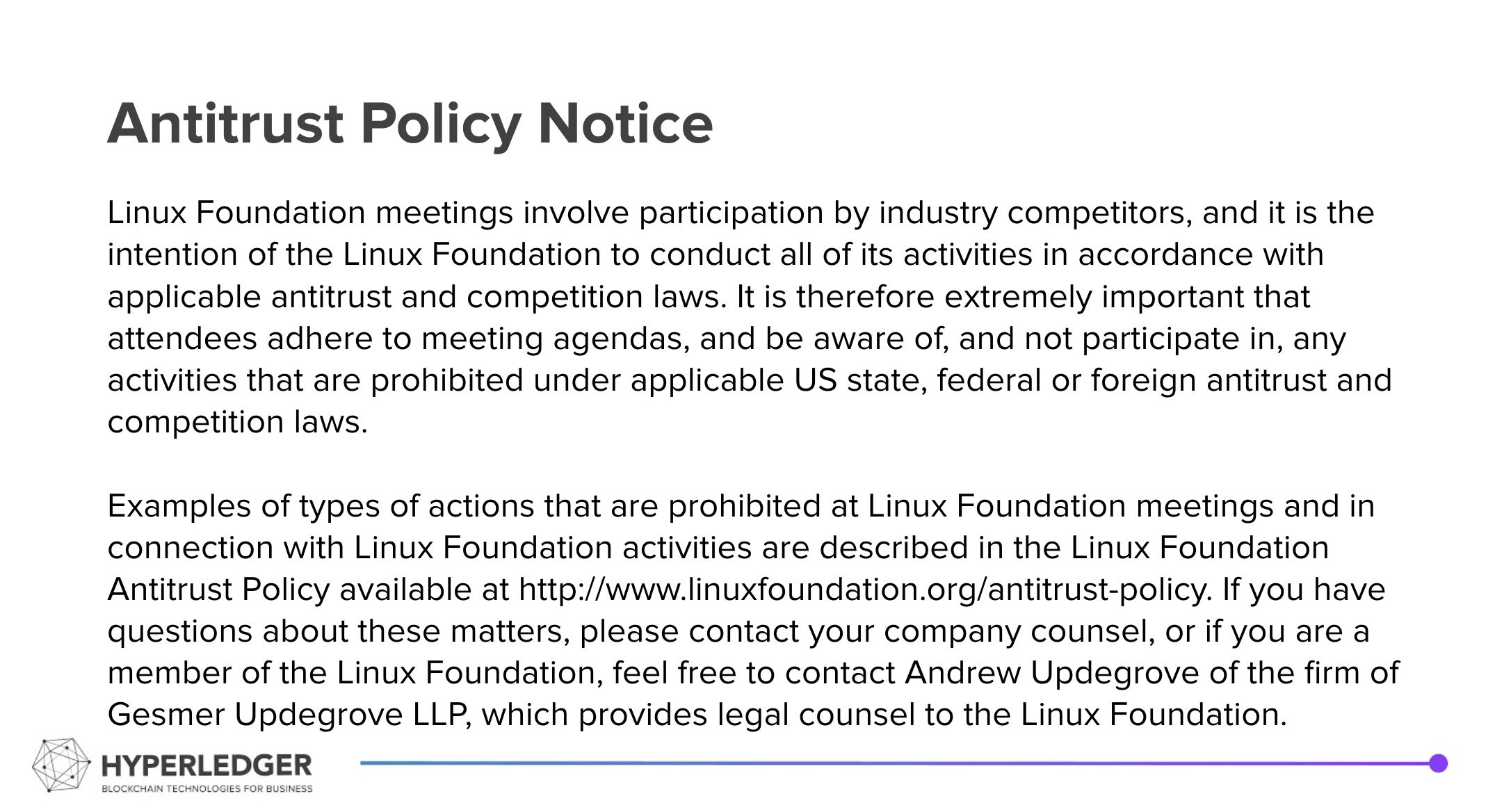Summary
- Revisiting/Finalizing points from last two meetings (state proofs, agreement keys, DIDDoc content)
- Resolving ledger objects as DIDs?
Recording from the call: <To Be Added>
Hyperledger is committed to creating a safe and welcoming community for all. For more information please visit the Hyperledger Code of Conduct. |
|---|
Welcome and Introductions
Announcements
Attendees
Collaboration Channels
- Current hackmd document
- indy-did-method on RocketChat - https://chat.hyperledger.org/channel/indy-did-method
- indy-did-method repo:
ReSpec vs.SpecUp
Agreed Upon:
- See HackMD Document for most of what we have discussed
Online Discussion (from RocketChat this week)
- Further discussion of State Proofs and what should the transaction be to get back a DIDDoc
- Request for input on the "nymKeyAgreement" flag. Not much in the response.
This Week's Discussion:
- From last week's discussion – confirmation of approach:
- Have a single call that gets the NYM and ATTRIB and state proofs for both with same multi-signed merkle root, and leave the assembly to the client.
- With support for the version_id and version_time resolution parameters.
- Other options rejected
- Do nothing
- Single call with both state proofs and ledger does assembly
- Write DIDDoc on ledger writes and have state proof for DIDDoc
- Add WRITE_DIDDOC transaction
- Have a single call that gets the NYM and ATTRIB and state proofs for both with same multi-signed merkle root, and leave the assembly to the client.
- Decision on assembly points of concern:
- The "nymKeyAgreement" flag
- Remove the "content" item and just inline the rest of the ATTRIB?
- What error checking should be done on the ATTRIB. See proposal in the hackmd document (valid JSON, no NYM fields, valid DIDDoc)
- Other Indy Ledger Objects as DIDs (e.g. schema, etc):
- Drummonds proposal: https://docs.google.com/document/d/1f99z4Bf8F-DA8EbkNjInVQv2ncJGPwF_Dp7I7Mfyhqs/edit
- Existing transactions
Future Discussions:
- What format for other objects on the ledger as DIDDocs.
- Handling existing objects on the ledger as DIDDocs?
- DNR and DND discussions
- To find networks we will require at least the first and perhaps the second of these approaches, while the rest are suggested:
- Config files for one or more known networks
- A mechanism for a ledger operator to register discovery information for other ledgers (aka "human gossip")
- A DID/DIDDoc on a ledger will contain cross-registry information
- A mechanism is needed for finding the DID(s) that contain the registrations – ideas have been put forward - a DID Name Directory (DND) is the likely approach.
- Document about the DND and DNR records
- Decentralized registries based on verifiable credentials
- Other registry mechanisms, such as the DDNR proposal
- The DID Method Spec will include a reference to a repo (likely) "indy-did-networks" within Hyperledger that will be a lightly managed, structured repository of folders per Indy network with at least the config file(s) for the networks. Use of the repo is voluntary, but provides a convenient way for networks to publish information about the network. Maintainers will be selected from the community and should exhibit a light hand in accepting PRs, being concerned mainly with structure of the data (not content) and that contributors are not being malicious about updating the information of other network operators. The Hyperledger governance structure may be used for disputes as appropriate. This is not a replacement for the Governance that a specific network should implement.
- To find networks we will require at least the first and perhaps the second of these approaches, while the rest are suggested:

